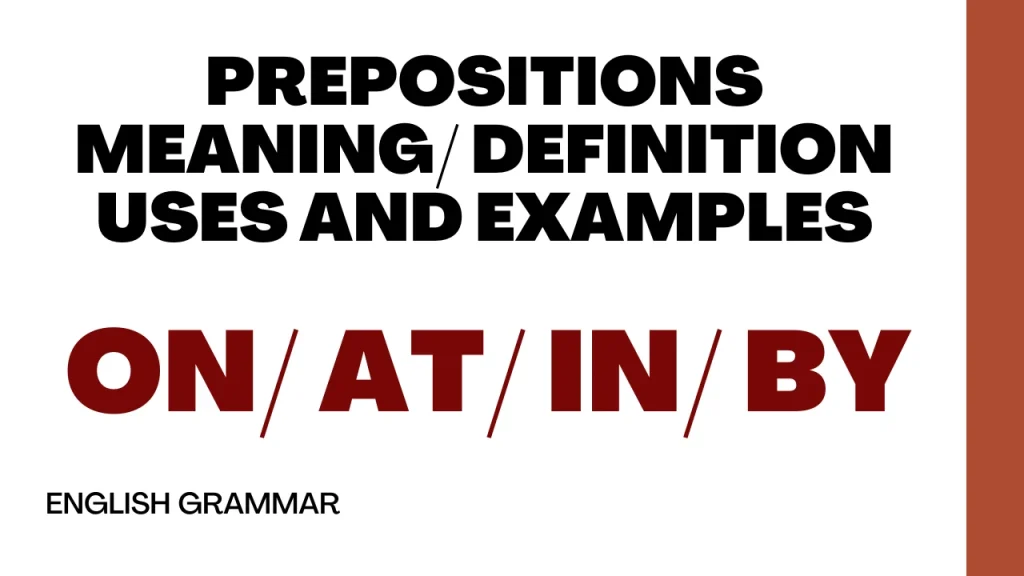
Prepositions of Time are essential elements in the English language that help establish relationships between different parts of a sentence. Among the most commonly used prepositions are “on,” “at,” “in,” and “by.” Each of these prepositions has specific usage rules and contexts. Let’s explore each of them in detail:
1. Prepositions of Time “On”
We use “on” to indicate a surface or a position that directly contacts something. For example:
- The book is on the table.
- She placed her keys on the counter.
“On” is also used to indicate days and dates:
- The meeting is on Monday.
- My birthday is on July 15th.
Additionally, “on” can be used to express a state or condition:
- He is on vacation.
- The house is on fire.
2. Prepositions of Time “At”:
- I’ll meet you at the park.
- The concert is at 7 p.m.
It is also used to indicate a specific time:
- I wake up at 6 a.m.
- The movie starts at 9:30 p.m.
“At” can be used in expressions related to institutions, organizations, or places of work:
- She works at a hospital.
- I studied at Harvard University.
3. Prepositions of Time “In”:
“In” is used to denote being inside or within an enclosed space. For example:
- The cat is in the box.
- They live in an apartment.
It is commonly used to indicate periods or seasons:
- She was born in 1990.
- We go skiing in winter.
“In” can also describe the means of transportation:
- I traveled to Spain in a plane.
- He commutes to work in a car.
4. Prepositions of Time “By”:
“By” expresses the means, method, or manner in which something is done.”
- She traveled to Paris by train.
- He solved the puzzle by himself.
It can also denote proximity or close contact:
- The store is by the post office.
- He sat by the window.
- Please submit your report by Friday.
- I’ll finish the project by the end of the month.
It is important to note that Prepositions of Time can have multiple meanings and usages, and context plays a crucial role in determining which preposition is most appropriate. Additionally, prepositions can be part of idiomatic expressions, and their usage may not always follow strict grammatical rules. Therefore, it is essential to familiarize yourself with common prepositional phrases and their context-specific usage to develop a better understanding of these prepositions.